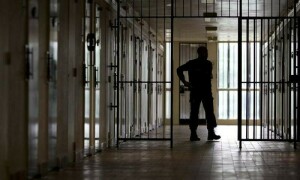ISLAMABAD: The government is considering hiring international third-party auditors to end an ongoing controversy between the Power Division and the regulator over the size of circular debt.
Informed sources said the International Monetary Fund (IMF) is engaged with the Power Division on a regular basis to get clarity on questions raised by the National Electric Power Regulatory Authority over the power sector financials given the fact that power sector performance was at the centre of the $6 billion Extended Fund Facility.
Therefore, the role of third-party examination of power sector financials had become imporant. The sources said that an independent validation had become necessary after some cabinet members recently raised concerns over the conflicting statistics and put up written questions for the satisfaction of federal cabinet.
A team of power ministry officials had been assigned to prepare detailed responses to the questionnaire along with a report on questions being raised and the process of reporting by various entities.
An official said the third party would not mean independent chartered firms because of different nature of their expertise but specialised institutions well versed with energy sector issues in other countries like the World Bank and the Asian Development Bank (ADB).
The two institutions have remained extensively involved in the country’s power sector through a number of projects and reform programmes. The ADB was also engaged with a special task of examination of power purchase agreements with rental power projects during the PPP government and majority of those projects were shelved on the basis of ADB’s input.
The Power Division and the regulator had entered into a controversy last month over the size of circular debt and rate of its monthly growth.
The matter repeatedly came under discussion at meetings presided over by PM Imran Khan, Finance Adviser Dr Abdul Hafeez Shaikh, Planning Minister Asad Umar and Special Assistant on Petroleum Nadeem Babar.
The Power Division is claiming to have reduced the monthly build up in circular debt from Rs38bn in July 2018 to about Rs10-12bn per month through increased recoveries, theft control and loss reduction.
Questioning the Power Division’s position, the regulator had reported that circular debt had increased by about Rs492bn during FY19 at a monthly average of about Rs41-42bn, as opposed to Rs10-12bn per month being advocated by the division. As a result, it also asked PM to declare a National Power Emergency and take drastic steps to scale down about Rs1.93 trillion circular debt that was significantly higher than reported by the Power Division.
In a press release issued two weeks ago, the Power Division had put the overall circular debt – including fresh payables and old stock parked in the Power Holding Company Limited (PHPL) — at Rs1.782tr as of Dec 31, 2019. Later, in a presentation to a Senate Special Committee, Pakistan Electric Power Company (Pepco) working under the Power Division reported total payables at Rs1.882tr as of Jan 31 including PHPL debts of Rs807bn.
Based on Power Division’s data, the IMF had reported circular debt at Rs1.690tr at end-September 2019. As such, the monthly build up works out at Rs31bn as of end-December as reported by the Power Division or Rs48bn per month on the basis of Pepco’s data for January.
The regulator also reported that monthly circular debt touched the lowest ebb of Rs3.25bn in June 2016 but has since been increasing. The average build up amounted to Rs10.8bn by June 2017, Rs25.58bn by June 2018 and Rs41bn by June 2019. It slightly reduced to Rs39.67bn in December 2019 and went up again to Rs42.4bn in January this year.
Published in Dawn, March 14th, 2020
















































